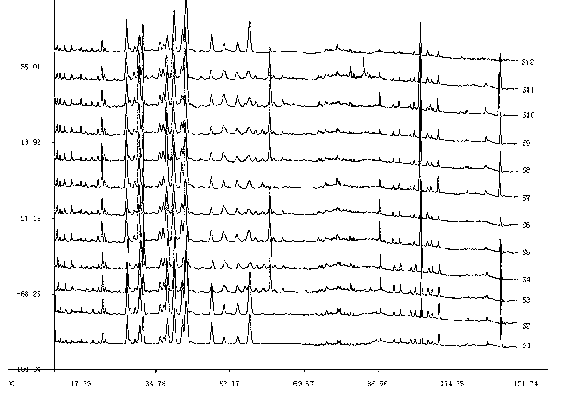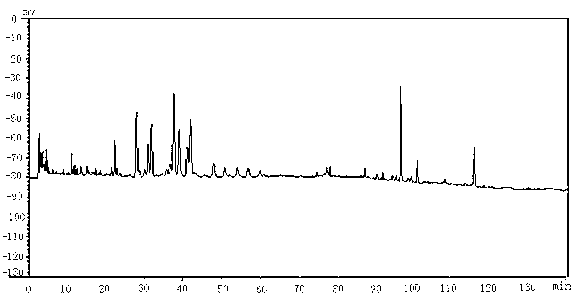Establishment of pigeonpea leaf herb finger print, and finger print thereof
A technology of fingerprints and pigeonpea leaves, which is applied in the field of quality control of traditional Chinese medicinal materials, can solve the problems of not being able to reflect the overall quality of medicinal materials, and achieve the effect of simple method, accurate authenticity, and good reproducibility
- Summary
- Abstract
- Description
- Claims
- Application Information
AI Technical Summary
Problems solved by technology
Method used
Image
Examples
Embodiment 1
[0056] Example 1. Detection of the fingerprints of pigeon pea leaf medicinal material
[0057] 1. Instruments and reagents
[0058] 1.1 Instrument 1 / 100,000 electronic balance (Sartorius CP225D, German company Sartorius); Japan Shimadzu LC-20A (UV / Vis) high performance liquid chromatography: quaternary gradient pump (TLC-20AT), online degasser, Column thermostat (CTO-20AT), autosampler (SIL-20AT), detector (SPD-20AT); Shimadzu LC solution chromatography workstation; university liquid phase column: Dikma Diamonsil C 18(2) column (250× 4.6mm, 5μm).
[0059] 1.2 Reagents Vitexin reference substance; methanol (chromatographically pure), glacial acetic acid (analytical pure), ultrapure water.
[0060] 2. High performance liquid chromatography
[0061] 2.1 Chromatographic conditions: the chromatographic column is filled with octadecylsilane bonded silica gel; the mobile phase is a gradient eluent composed of methanol and 1.0% glacial acetic acid; the column temperature is 40°C; t...
Embodiment 2
[0069] Example 2. Detect the fingerprints of 12 batches of pigeonpea leaf medicinal materials
[0070] Take 12 batches of pigeonpea leaf medicinal material, detect according to the conditions of Example 1, and obtain the HPLC spectra of 12 batches of samples. Through the comparison of 12 batches of HPLC chromatograms, the similarity evaluation is carried out, and the characteristic common peaks are determined:
[0071] There are 11 common peaks in the fingerprint spectrum. Now the retention time of the spectrum, the average value of the peak area and the total peak area are summarized, as follows:
[0072] For peak No. 1, the average relative retention time RRT is 0.5832, the RSD is 0.14%, the average relative peak area RPA is 1.9761, and the RSD is 42.34%, accounting for 8.56% of the total peak area.
[0073] For peak No. 2, the average relative retention time RRT is 0.6455, the RSD is 0.11%, the average relative peak area RPA is 1.8675, and the RSD is 47.96%, accounting for...
PUM
 Login to View More
Login to View More Abstract
Description
Claims
Application Information
 Login to View More
Login to View More - R&D
- Intellectual Property
- Life Sciences
- Materials
- Tech Scout
- Unparalleled Data Quality
- Higher Quality Content
- 60% Fewer Hallucinations
Browse by: Latest US Patents, China's latest patents, Technical Efficacy Thesaurus, Application Domain, Technology Topic, Popular Technical Reports.
© 2025 PatSnap. All rights reserved.Legal|Privacy policy|Modern Slavery Act Transparency Statement|Sitemap|About US| Contact US: help@patsnap.com



